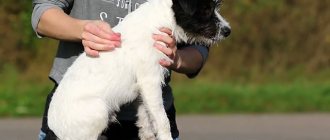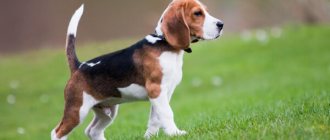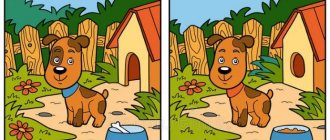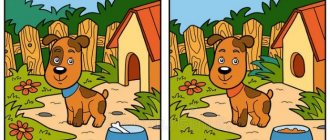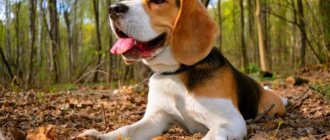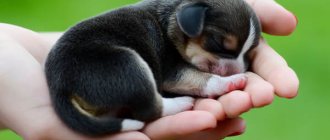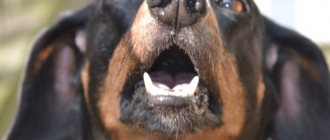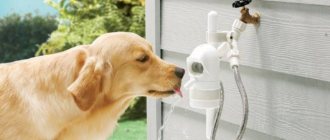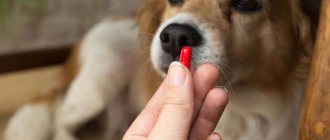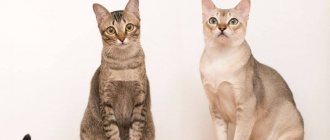Story
In official documents, the beagle is considered an English hound, which appeared in the 14th century. The treatise of the ancient author Xenophon describes the breeds of dogs that helped hunt animals. In the work, a beagle chases a hare with a ringing bark. The variety could have been brought about by the Romans, who captured part of the island. However, the origins of the Beagle breed are complicated.
Medieval England was distinguished by hound hunting. Aristocrats got themselves dogs whose size did not exceed 25 centimeters. Mini-dogs were especially popular among women who went hunting.
Dogs were spread throughout England, and wealthy landowners began to own dogs. Then the beagle began to supplant other breeds. In the 18th century, it became fashionable to hunt foxes and hounds gave way to burrowing terriers.
There was no talk about standards. The owners crossed their pets at their own discretion. Two branches stood out: the fast northern one, the heavy southern one. Individuals were mixed with terriers to produce long-haired dogs that helped in fox hunting - fox beagles. The classic breed was preserved thanks to landowners who continued to hunt hares.
The name of Parson Honeywood went down in the history of the creation of the hound. An enthusiast collected northern and southern specimens in Essex. By the 19th century, a standard was formed. The dogs took part in exhibitions, continued to chase the hare, and were used as pets.
Thomas Johnson, on the contrary, paid attention not to the hunting qualities of the dog, but to the aesthetic ones. He developed a line of the breed that ceased to exist by the 20th century.
Beagle breed standards
The beagle has an interesting description of the breed, his character is very friendly, he will become a companion and friend for the family or for hunters. The compact and well-coordinated shape is completely devoid of rudeness and impudence. An intelligent look, supported by affectionate behavior towards people, defines the Beagle as a domestic dog.
- The Beagle is short and muscular.
- The ears are beautiful and large, rather thin and close to the cheekbones.
- The skull is slightly convex.
- The eyes are large brown.
- Short-haired coat type.
Breed variety: size and weight
The dog breed is Beagle, which belongs to the hunting type. The sizes are not small, it is not a small breed, but rather a medium one. Weight is from 8 to 11 kg, and height at the withers is 33-41 cm. Males are larger than females due to physiological characteristics, so they are more massive and hardy.
A male dog is suitable for long-term hunting over long distances, while a female dog is better used for short-term hunting, since when female beagles are tired, they do not cope so well with hunting tasks.
In the 18th century, there were the following types:
- southern-massive;
- northern;
- Fox Beagle;
- dwarf;
- long-haired
After the past wars, the number of varieties of the breed decreased significantly. Today, the dog breed, the beagle, is divided into several types:
- American Beagle. Originally from the USA. This breed is larger and more massive than the European one.
- European beagle. It has such subspecies as the French Beagle Harrier, the Irish Kerry, and the English Beagle.
There is no particular difference between the beagle varieties, other than size. However, there are some features:
- The Beagle Harrier is more suitable for family life; you don’t often see it at exhibitions, unlike its American relative.
- The English Beagle is often used for official purposes; such a dog detects weapons and drugs thanks to its sense of smell.
- The Kerry Beagle differs from the American breed by its saddle color, that is, large areas of the body are dark in color.
Color and coat type
The color differs depending on the predominant color of the animal's parents. But the classic color option is 3 tones mixed with each other, namely black, red and white. The colors may be speckled, but the tip of the dog's tail in most cases is white.
The thick and smooth coat is not long, which makes caring for the animal easier. The presence of undercoat protects the animal from bad weather, preventing it from getting wet. This makes hunting in rain or swampy areas easier.
Description of the breed
The official standard was released in 1895. Before this, a breed club was formed. At the end of the 19th century, an exhibition was held, gathering only English beagles in Birmingham. By the middle of the twentieth century, dogs gained incredible popularity in the United States.
The description of the Beagle breed was amended in 1987. Dog's height and weight: 33-40 cm, 8-16 kg.
Breed body characteristics:
- the head is elongated, powerful, without folds, the muzzle is blunt, the lips sag a little;
- bite – the dog’s teeth are strong and close like a knife;
- eyes – large, from dark brown to hazel, widely spaced;
- ears – rounded, thin, hanging down, when straightened they reach the nose;
- neck – long with slight dewlap;
- the body is compact, the back is flat;
- paws are short, the forelimbs are without relief, the hind limbs are distinguished by muscular thighs;
- wool – the length is the same throughout the dog’s body;
- the tail is straight, medium in size, and does not bend.
Expert opinion
Anna Abramenko
An avid dog lover. Experience in veterinary medicine since 2009.
Ask a Question
The standard includes a mandatory white tip of the tail. The dog following the trail can be seen from under the tall grass. Breeders have worked for a long time on this external quality, so the tail cannot be docked.
In the description, it is important not only how much an adult beagle weighs, but also the dog’s voice. It is the long, ringing bark that becomes a serious problem for keeping a pet at home. There is an expression "singing beagle". The dog is very noisy, makes various sounds - barking, a prolonged howl.
Description of the French Beagle
The standard assumes the use of a beagle harrier as a track hound. But recently, more and more often, the hunting and working qualities of the breed fade into the background, and the animals are kept simply as pets and family dogs.
Appearance
The physique of the Beagle Harrier is strong and stocky, perfectly balanced with strong bones and a well-developed muscular corset . The body is elongated, rectangular in format with a short, straight back, deep, round and voluminous chest, strong, slightly arched lower back and a slightly drooping belly (not very toned).
The Beagle Harrier's build is a bit stocky.
Breed standard:
- The not too large head with a voluminous expanded cranial part and a barely noticeable bump on the back of the head is set on a flexible, long, slightly curved neck. The muzzle and skull are approximately equal in length. The muzzle gradually tapers towards the nose (not square). Stop moderate.
- The bridge of the nose is smooth and straight (a hump is not allowed). The large nose is pigmented black.
- The eyes are medium in size, well open. Iris of dark shades. The look is lively, smart and meaningful .
- Short, not very wide, flat hanging ears are placed along the line of the eyes. They fit tightly to the head, slightly turned outward at the ends, and there are shallow folds closer to the middle.
- Straight and strong legs are located parallel. The paws are short, tightly knit with elastic large pads.
- Height at the withers is from 45 to 50 cm.
The French Beagle moves with flexibility, energy and agility.
The thick, medium-length coat fits snugly to the body. The standard allows only a three-color color of white and red (red) with a black saddle . The outlines of the spots are not very clear, the colors of the tan marks vary from dark fawn to brownish-reddish. Gray (smoky) tan and red, white and gray colors are allowed.
The saddle cloth is a dark-colored area on the back, extends to the sides and forms a saddle (cloak).
The standard allows only three-color color of beagle harriers
Disadvantages and disqualifying vices
The following are considered defects or deficiencies:
- heavy or large head;
- too pronounced stop;
- curved bridge of the nose, overly wide open nostrils;
- curled ears;
- undershot or overshot;
- paw spread;
- flat paws;
- heterogeneity of scrotal color (depigmentation);
- effeminacy, timidity or lack of intelligence.
The reasons for disqualification will be:
- cryptorchidism;
- obvious behavioral, mental or physical abnormalities;
- cowardice or aggressiveness.
The difference between the beagle harrier breed and the beagle
Harriers inherited the appearance of beagles from their closest relatives, beagles. All standard characteristics of the breeds coincide almost completely, excluding dimensions. The maximum height at the withers of a beagle should not exceed 40 cm, while its French descendant is larger - its height is about 45–50 cm.
The beagle is smaller than the beagle harrier
At one time, the Beagle Harrier was considered simply a variety of the Beagle, but now it is a separate, albeit very small, breed.
Character and psyche of the breed
The Beagle Harrier is characterized by an affable, open, friendly character and a balanced, rather calm temperament . In ordinary life, this hunting dog is meek, flexible and friendly to everyone without exception. Cases of aggression towards strangers or other dogs are extremely rare. He becomes strongly attached to the entire family in which he lives, especially highlighting the owner. He is ready to tinker and play with children ad infinitum, patiently enduring unceremonious and rude treatment. When the beagle becomes completely unbearable, he will simply run away to a safe distance.
He will always announce the arrival of strangers with a loud bark, but will not show any aggression towards them, since he perceives all people equally positively. Because of this quality, the Beagle Harrier is not suitable for protective purposes. He gets along well with other domestic animals, because these dogs were always kept in packs, and the hounds hunted together as a whole pack. They never make attempts to dominate; they immediately understand the family hierarchy. They are able to make friends with their domestic cats, but neighbor, stray and street cats are always of hunting interest to them.
Beagle Harrier loves to play with his relatives
Dogs do not need authoritarian, strict leadership, since they know what is required of them. But occasionally they tend to be stubborn, act willfully and disobey. Early socialization and timely education will help avoid negative consequences. French beagles have a need for constant communication; they tolerate loneliness very hard. Left alone for a long time, they yearn, whine and howl, and also fill the surroundings with ringing barks. Out of boredom, not knowing what to do with themselves, they can chew on the owner's shoes, furniture or furnishings.
A distant relative had a beagle (American). The dog hated being locked up at home. He sat for hours near the front door, scratching the upholstery, tearing off pieces of dermantine, while barking incessantly. He did not know fatigue; he could bark almost endlessly. He completely forgot about eating, drinking, not to mention sleeping. All shoes had to be put away as high as possible, preferably on the mezzanine, otherwise all that was left of them would be “horns and legs.” In all other respects, he was the sweetest and very affectionate dog.
Video: Beagle Harrier in the apartment
Purpose
The hound dog was bred for hunting. The dog was allowed to hunt hares and large animals. The beagle smelled prey and chased it across the fields. By barking, the assistant reported the location of the hare.
By the 21st century, England had banned the use of dogs to track rabbits without the permission of the landowner. Beagles are also used to identify prohibitive means in research and experiments.
Today the beagle can be a companion. But the dog's hunting instinct is highly developed. Pets need long walks and daily games. Out of boredom, the dog will begin to take out energy on things in the house. A sedentary lifestyle leads to obesity in dogs.
Expert opinion
Anna Abramenko
An avid dog lover. Experience in veterinary medicine since 2009.
Ask a Question
A good hound can chase its prey for several hours without stopping. A beagle travels up to 120 km per day. This dog is not a couch pet.
History of the breed
The history of the origin of this breed has many versions.
However, among them there are 2 main ones:
- Ancient Greek origin . The Greek historian Xenophon spoke about the existence in Ancient Greece of short hounds that worked on the scent. Subsequently, the Greeks’ experience in using hounds was adopted by the Romans, who brought these dogs to the territory of the British Isles;
- English origin . Adherents of this theory talk about the existence of hounds in England even before the Romans arrived there - in particular, the Prince of Wales was the owner of a special breed of white hounds.
The first mention of beagles in the literature dates back to 1475. The appearance of those dogs was different from modern beagles, but as a result of selection work carried out over several hundred years, the exterior of the breed has undergone significant changes.
NOTE!
The breed standard, which remains relevant today, was adopted in 1957.
Beagles are ground hunters, excellent at sniffing out prey by following its scent. This dog breed is good at hunting hares. However, thanks to their sensitive sense of smell, they can be used in hunting ducks, swans, wood grouse, woodcock, wild boars, deer, roe deer and other animals - it depends on who you train the dog on.
Kinds
The standard describes the European dog. There is also an American version, which is slightly larger in size and color.
The variety includes the mini-dog, known even under Elizabeth I. Individuals had all the qualities necessary for hunting; the dogs were placed in a bag on the saddle. Aristocrats gave small hounds to ladies. The dog's height at the withers did not exceed 29 cm; the dog was called dwarf.
It is officially believed that the height of a healthy dog is from 33 cm. Lower values may indicate congenital diseases in the dog.
There is a separate type of breed, distinguished by its large size. The French pet was bred by Baron Gerard. The dog at the withers is 45-51 cm, weighs 19-21 kg. The Beagle has a muscular, proportionally built body, a large head, a long neck, and high-set ears. The breed's hunting qualities and friendliness have been preserved.
Size
The name of purebred pets is translated from Old English as “small”. “Beagle” is not only a common name, but also a conventional description of the size of the animal.
The black beagle is not purebred
Standard
The standard sizes of pets are approved by the Canine Association. Their height at the withers should not exceed 40 cm, but cannot be less than 33 cm. Individuals have a powerful, medium-sized head, and there are no folds on the muzzle. The skin on the nose is colored in dark or brown tones, soft ears with a slight rounding at the ends are tightly pressed in the cheekbones, and are characterized by a low set.
Mini
Small representatives of the breed have been mentioned since the reign of Elizabeth the First. In those days, their size made it possible to carry pets in an ordinary hunting bag attached to a horse saddle.
Long-term work by breeders has led to changes. Unscrupulous breeders advertise dogs with a height at the withers of 20 to 29 cm, claiming that they belong to the “mini” subspecies. Such a standard has not been registered in any canine association.
Important! Experts attribute any deviations from standard growth to marriage or lack of purebred. Sometimes the development of pets is affected by an incorrectly selected diet and certain diseases.
Dwarf
The minimum permissible size of animals is 33 cm. The exact height depends on belonging to one of the five varieties. When buying a new family member, you need to decide in advance for what purpose it is being acquired. Animals that do not meet the specified standards do not have the right to participate in exhibition shows or breeding.
Important! Dogs with a height at the withers of up to 33 cm are not allowed for exhibitions. There are no dwarf subspecies of beagles.
Where do dwarf beagles come from?
According to documents from cynological associations, there are five main varieties of the breed. They have differences in size, character and color. Fraudsters often classify European beagles as a subgroup of dwarf beagles, calling them mini beagles.
Marriage or breed
The standard height of beagles varies from 33 to 56 cm. When selling, individual “specialists” show the potential buyer a teenage puppy or photographs modified with special programs. After a while, the deceived owner realizes that the “dwarf baby” quickly reaches the standard volumes. Animals that do not meet accepted standards are rejected. There are no exceptions with this breed.
Beagles are intelligent, loyal animals with strong hunting instincts. To raise a healthy pet, the owner will have to follow nutritional standards and often walk the dog.
Beagle color
The standard allows for different tones. The only exception is the white tip of the tail and fur. There is a saying that a good hound has no bad colors. What is more important is the internal qualities of the Beagle breed.
Accepted base colors:
- Bicolor. The coat combines white with red, lemon, and red. Bicolored individuals have a dark, flesh-colored, liver-like nose. By scarlet we mean mahogany. The lemon-white version has cream-colored spots. Acceptable, but a rare black and white color.
- Tricolor. Most often this is a black, red and white version. Puppies are born black and white, and with age their heads and paws turn red. The dog's nose is only dark.
- Muted. Black can be greatly weakened, creating a blue tone. Puppies are gray and white at first. The nose is often grayish.
- Spotted. Torn black and red spots are visible on a light background.
- Speckled color. The color, complete with dots, is common, especially in puppies 6-8 weeks old. It persists if it appears in the baby at 4-5 days of life. Usually found in working dogs, although not officially considered a fault.
- Motley. Causes a lot of controversy and contradictions. In England, the color is prescribed as a standard. White has a creamy tint. On the main background, the spots consist of a mixture of hairs of silver, black, and red tones. The line from white to another color is blurred. The nose is dark along the edges and light in the center.
It is easy to get confused in color, which depends on the age and hormonal background of the animal. The documents indicate one of two options for a dog: bicolor, tricolor.
Expert opinion
Anna Abramenko
An avid dog lover. Experience in veterinary medicine since 2009.
Ask a Question
The chocolate tone is not recognized as a standard, but is very beautiful. Black color changed to brown, liver, lilac. In America, individuals are admitted to exhibitions and receive well-deserved awards.
Colors
Today you can buy a dog of any color that is not a prohibited breed standard, so choosing a pet with a coat type that suits your taste will not be difficult.
Similar article: Everything about buying and adapting a Beagle puppy
Two-color and three-color
Many people prefer bicolor or tricolor. The combination of three colors - black and white with red - is an excellent individual coloring of a representative of the species. The spots on the coat can vary in size, so tricolor can be shiny (more light), black (more dark) and variegated (a combination of all shades).
Puppies with a chocolate, that is, liver tricolor (from dark chocolate to lilac shades) are rejected from breeding.
Two-color dogs are popular both in the homeland of beagles and in our country. They come in white and red or black and white. The most common colors of Beagle dogs of this species are a combination of tan, red, chestnut or lemon with white. The pure white beagle is a rare specimen. This is the only single-color color allowed by the standard.
We recommend this article:
Features of caring for and keeping a beagle at home
Weakened
Such animals have a color weakening gene. The muted coat color is blue. Sometimes breeders call it a weakened tricolor. Puppies start out with a gray-white coat color that later becomes light or dark gray with varying variations. There are quite a few dogs with weakened color.
Motley
The unusual coat color is represented by a combination of three main ones - solid white and spotted ones of different sizes. Moreover, the light tone can be called more likely lilac or cream. Variegated colors include badger-pied, hare-pied, and lemon-pied. The dogs with the first color are the least common. Motley can be seen both throughout the dog’s body and in the form of a single dark line on the surface of the back. Cynologists are still arguing about which colors should be considered variegated.
Spotted
Breeders also call the spotted type of coloration open tricolor or “broken tricolor.” This is due to the presence of a dark tint present in places on the main white. Sometimes such spots have a red addition.
Similar article: Description and character traits of the Beagle dog
Mottled
Speckled color is found on both tricolor and two-color pets. It is characterized by the presence of small spots located nearby. The paw pads of puppies with this type of coat are dark. The spots are clearly visible on the surface from the age of 8 weeks, and as they grow older they increase in size.
Behavior - skills and abilities
To characterize the beagle, it is important to note its excellent sense of smell. It’s not for nothing that hunters and customs officers fell in love with the dog. A study was conducted in the middle of the last century. The subjects found mice by smell. The beagle managed to complete the test in less than 1 minute. Having smelled the smell, pets go considerable distances from the owner.
Hounds tolerate any climate well. The Beagle is tireless and artistic, which is why dogs are featured in films. The Beagle breed was used in the films: “Star Putt”, “Superdog”, “Shiloh”, etc.
Beagle character
The Beagle is a cheerful, sociable pet. The dog finds contact with others, loves noise and crowds of people. The beagle is not inclined to show aggression. The pet is an active adventurer. On a walk, the dog does not respond well to the command “come to me.”
The look of a pet wins the hearts of inexperienced dog breeders who make a rash purchase. The beagle will carry out the contents of the apartment with just such a sweet, questioning expression in its eyes. Character traits cannot be eradicated, so the pet needs regular walking, ideally hunting with the owner.
The dog has a soft temperament and does not tolerate loneliness well. The Beagle is not suitable for protection.
Beagle is a dog with character
The Beagle is not only a hunter, but also an excellent companion. His cheerful, perky disposition makes him attractive to active people who are ready for many hours of walks, outdoor games, and intricate workouts. The golden character is perhaps the main advantage of the beagle. The absolute absence of aggression and always sunny mood will not leave anyone indifferent.
Disadvantages include an excessive tendency to hooliganism. As a puppy, a beagle will chew on everything it can get its hands on: it will taste a wallet with banknotes in it, compost socks, put things in order in a drawer with vegetables, and fix the upholstery to its taste. However, the joy of communicating with this dog many times overshadows all the troubles: all that remains is to understand and forgive.
Education and training
Hounds are very stubborn and cunning. Beagles are difficult to train. A male dog does not always consider his owner to be the main one.
The Beagle knows how to manipulate, senses weaknesses well, turning them to his advantage. There should be no exceptions or concessions for the dog in the rules. Training with a dog should be carried out in a game, evoking positive emotions in the pet.
It is important to follow simple rules:
- patience – attempts to raise a pet cannot be stopped;
- regularity – choose the same time for beagle training;
- struggle for leadership - the pet is weaker, depends on the will of the owner;
- repetition - the animal is accustomed to commands;
- motivation - at first the role of encouragement is played by deliciousness, then by the owner’s praise;
- mobility - training is carried out actively so that the beagle does not get bored.
Special courses can help the dog’s owner. It is important that the training is carried out together, otherwise the beagle will think that the dog handler is in charge, and not the owner. The minimum that needs to be taught to a dog is “place”, “to me”, “sit”. The Beagle perfectly understands commands made by gestures.
Care and maintenance
Smooth-haired beagles are easier to care for than shaggy ones.
Features of a beautiful appearance lie in the usual rules for other dogs:
- coat - brush your beagle once a week, more often when shedding;
- bathing – the dog is often not given water treatments, usually three times a year, exceptions are preparations for exhibitions, contamination after intense walks;
- ears - clean the dog twice a month, keep an eye on dust;
- paws - cutting is inevitable, because animals cannot grind them down on their own. Large claws are also cut off with a special tool, the main thing is not to touch a blood vessel;
- teeth - brush the beagle at least once a week, monitor the condition of the gums and bite;
- eyes - when soured, wipe with a soft cloth.
From spring to autumn, fleas and ticks create a big problem. After each walk, your pet must be checked for parasites. There are special drops, sprays, collars, and folk remedies.
Dogs are vaccinated every year. Before this, the beagle is given an anthelmintic. The veterinarian will advise which drugs are best administered by reading the information in the vaccination passport.
Nutrition
Dogs are fed prepared products or natural food. There are supporters and opponents in both options. It is important not to mix these types of nutrition. The dog’s body gets used to digesting foods in a certain way; it is not recommended to disrupt the diet.
A beagle must eat a specific number of times per day. The portion depends on the weight of the individual.
For example, look at the table by month:
| Dog age/months | Number of feedings per day |
| Up to 2 | 5-6 |
| 2-6 | 4 |
| 6-12 | 3 |
| After 12 | 1-2 |
The Beagle is not picky about food, the dog has an excellent appetite. An adult animal with a normal load is given 300 g of meat and 150 grams of porridge. Bones are used to clean the dog's teeth, but they are rarely given to chew on. It is better to buy a calf's tail for your dog. Natural food must be supplemented with vitamins and minerals.
Daily diet products for the Beagle breed:
- lean sea fish (remove bones first);
- meat, including turkey;
- fermented milk products;
- vegetables;
- cereals;
- fruits;
- eggs;
- offal.
Expert opinion
Anna Abramenko
An avid dog lover. Experience in veterinary medicine since 2009.
Ask a Question
Sweets and table food are harmful to the dog.
Dry food is provided to puppies if the breeder provided it in the nursery. It must be of high quality, made from natural products. There are special types for kids. The dosage depends on the puppy's weight. If the beagle begins to gain weight and has loose stools, the portion needs to be reduced.
For better digestion, dry granules are filled with water at room temperature. With age, the soaking procedure is stopped. The bowl should always be filled with clean water.
Lifespan
A beagle lives 12-15 years - average for individuals of this size. The period may change due to external factors and heredity. Excess weight has a negative impact on the life expectancy of dogs. Pets eat without restriction. It is important for owners to control the amount of energy consumed.
Beagles often contract diseases such as boils, glaucoma, cataracts, and ear infections. Your dog's hearing organs require care because they are poorly ventilated.
Pros and cons of the breed
Any pet must be assessed individually, but there are breed qualities inherent in all healthy individuals. Knowing the pros and cons will protect you from a rash act.
Advantages of the Beagle breed:
- lack of aggression, exceptions happen with cats and hares;
- friendliness - dogs are always happy to have guests;
- attachment to the owner;
- save you from depression with your cheerful disposition;
- adaptability, any setting is suitable, be it a private house, apartment, enclosure;
- endurance, even on a long journey;
- cleanliness, absence of a specific smell, dripping saliva;
- omnivorous;
- attractive appearance.
If you don't pay proper attention to your pet, many advantages will become disadvantages.
Disadvantages of the Beagle breed:
- intolerance of loneliness, which will result in aggression in the dog;
- difficulty in training a dog due to the inability to concentrate;
- begging - for the sake of extra food, the pet is ready to cause the end of the world;
- excessive energy;
- gullibility;
- gluttony;
- loud barking.
You need to exercise your hound regularly, walk the dog, and play actively. A beagle should run 2-3 hours a day in the fresh air. Then only advantages will appear in the pet’s character.
Character
Little restless beagles are very active and playful. They love to play with children and always listen to them. Therefore, very often this breed is bought for a child. Pets very quickly get used to their owner and sense his mood. If the owner is not in the mood, then the beagle lies quietly and does not even make a sound. But if the owner is in a good mood, then the dog runs and frolics, enjoying life.
Dogs of this breed are sociable and sociable, but do not forget that they are born hunters. Therefore, small animals, even cats, cannot be kept with them. At the same time, little beagles are very brave and courageous. They are not afraid of danger, so when walking the dog, make sure that it does not fall under the wheels of a car.
Beagles have very unique personalities and can be stubborn and disobedient. Also, dogs of this breed are difficult to train, so this must be taken into account. To avoid problems with your dog, raise and train him from puppyhood. If you cannot do this yourself, then contact a specialist.
Despite some nuances of character, beagles are very smart and quick-witted. They easily remember the information they need and use it skillfully.
List of suitable nicknames
The dog can be named in English, although any names will do. It is better to choose short options for the dog. They are easier to pronounce, especially since the beagle perceives only the first sounds of the word.
There are special rules by which breeders name puppies from a new litter. For dogs with good pedigree this is extremely important.
Types of nicknames:
| Girl | Boy |
| BASIC | Dukes |
| Bonica | Vigo |
| Ada | Hardy |
| Mirri | Bengo |
| Palya | Axel |
The name should suit the dog, please the owner, and be harmonious. Since nicknames are written in Latin letters, it is better to choose an option for the dog that is pronounced equally well in Russian and English.
Rules for choosing a puppy
Becoming the owner of the Beagle breed is not difficult. The main thing is to want it. The issue of choosing a puppy must be approached responsibly. It all starts with meeting the parents of the future pet. Many qualities of a puppy are inherited. The beagle should come on its own. This way the puppy will demonstrate curiosity and friendliness.
You can take a dog away from its mother at 2 months. The Beagle will quickly fit into the family charter. When choosing an older puppy, you will have to deal with excessive curiosity. The pet will try to find weaknesses in the family structure.
Because of its friendliness, Beagles can be adopted into adulthood. The main thing is to get along in character.
Puppy cost
It is better to purchase the Beagle breed from a nursery. Professional breeders ensure that the dogs meet the standard. It will be good not only to walk and hunt with a dog, but also to participate in exhibitions. Having received awards, you can start breeding the breed.
There are quite a lot of breeders in the country. Choosing a puppy and a kennel with a good reputation is not easy. The popularity of the Beagle breed has led to the fact that you can buy a companion from your own hands. There is a risk of getting a dog with atypical behavior and diseases.
Beagle puppies cost:
- without documents – up to $300;
- with pedigree – $300-800;
- show class - $800-1000.
The pricing policy largely depends on whether the dog’s ancestors have championship titles and the breeder’s ambitions.
Content
- What is color and suit in dogs
- Beagle breed colors
- How to choose a healthy puppy
When a person chooses a pet, he gives preference not only to a certain breed, but also focuses his attention on the color (in this case, choosing a beagle puppy), it comes in different shades and colors, striking with its beautiful patterns and appearance. Genetics is one of the main points in a dog’s appearance; color, type of coat and proportions depend on it.
Reviews
Owners note that the beagle, as an energizer, does not let you get bored. The dog is suitable for active people, large families with small children. Owners often forgive their pets' pranks because of their good disposition and beautiful appearance.
The owners highlight the stubbornness of the dog, which does everything at its own discretion. The beagle's gaze remains kind and pleading.
People like that the dog gets along well with all pets and does not show aggression. The beagle misbehaves only out of boredom when left alone for a long time.
Character of the Beagle breed
The combination of hunting capabilities and goodwill became the basis for the development of such character traits of the beagle as:
- Activity . This breed loves to run, play and exercise. If a child wants to have fun in nature, then a beagle will be a faithful companion. The desire to explore new territories and places allows the animal to actively spend time.
- Optimism . The Beagle is a center of energy and fun, as the animal senses when a person is sad and tries to cheer him up. As practice shows, an hour of playing with a dog improves your mood several times.
- Friendliness. Beagles love to play not only with people, but also with other pets, so there will be no conflicts or disagreements.
- Curiosity . If a beagle sees children playing or adults getting together, he will join in the fun and spend time socially. Loneliness is not the best option for such a dog, but the important thing is that it will find company for itself.
- Attention . The beagle asks and even demands attention, and in its absence, it not only begins to feel sad, but can also damage furniture, tear off wallpaper and destroy everything around it.
This breed needs activity, so when living in a city apartment, it is recommended to organize trips into nature or to designated areas for dog training.
Attitude towards children and others
There is a stereotype that hunting dogs are aggressive and dangerous, so it is best to keep them away from children. But, as practice shows, the beagle is the complete opposite of the standard opinion of such dogs.
Kindness, curiosity and friendliness are valuable qualities of the breed, making it ideal for families with small children. In addition, an important property is that children easily find a connection with such a dog, since the animal at the genetic level takes care of those around it, trying to protect them from danger.
The Beagle needs education, then his attitude towards others will be even better.
Training
Training is the basis for balanced behavior and fulfillment of hunting tasks. And also, in the absence of proper physical activity, the animal begins to weaken, its mood deteriorates, which leads to poor health.
In order to comprehensively raise an animal, it is advisable to train a puppy in three stages:
- Training to obtain appropriate behavior in the family. A dog is a person’s friend and family member, so you need to instill in him those traits that are suitable for calm behavior.
- Training in obedience and following commands. This instills in the dog perseverance and calmness.
- Hunting training. If we consider a beagle for its intended purpose, that is, for hunting, then it must be prepared for this mentally and physically.
It’s worth starting with simple commands so that the animal gradually gets used to the new behavior mode. At the first stages, the training can be carried out independently, and later you can turn to dog handlers who have specialized knowledge and skills in this industry.
Photo and video review
The Beagle breed is not suitable for owners who work all the time. For lovers of travel, hunters, and active people, the dog will be an ideal companion. The photo clearly shows what a girl looks like with different colors.
Beagle: tricolor and bicolor
The most common type, the classic of the breed. Large spots of the primary colors typical of hounds are scattered throughout the body: red, white and black. In the case of a predominance of white, the color is called “brilliant”; red and black are called black-backed.
Important! Most tricolor Beagle breeds have a red-black color at birth; the final color range can only be assessed at 4-6 months.
Bicolors are no less adorable: Beagle lovers often call them “marshmallows.” Both white and red colors can predominate. Bicolors also include black and white beagles, but there are so few of them that only an experienced dog handler can identify a purebred representative of the breed. Speckles are allowed in all colors. The tip of the tail is always white (the height of the white area is not standardized).
